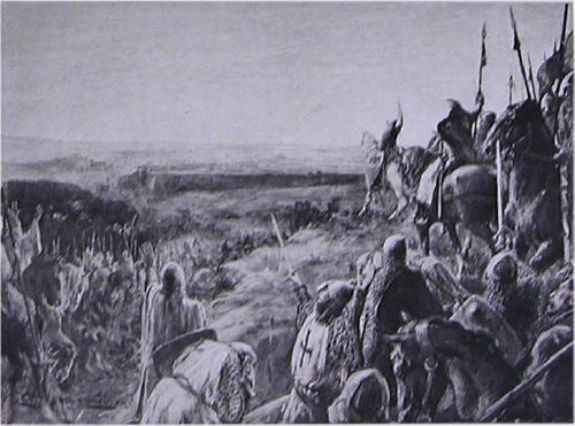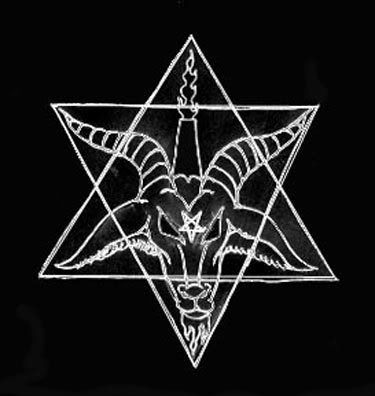The
pyramid structures are to have represented the north pole of Saturn as well,
which then leads to the “pyramid and the all-seeing eye” found on the back of
the U.S. one dollar bill… clearly a major fetish to Saturnians, usually
Freemasons. What is most interesting is that one of these thirteen-layered symbols was discovered some years ago in Ecuador. This artifact glows under black light. It’s not known who
constructed it many centuries ago, but it shows that this Saturnian culture was
worldwide. Thirteen is the other sacred number in the Saturnian occult. The “leader”
representing wisdom, and twelve “lieutenants,” is a very common symbolic theme. It also
represents the theory of “compartmentalization.”
 |
| The Knights Templars |
The
all-seeing “eye” is also based on a feature on Saturn’s surface. On the southpole of Saturn is an endless circular storm in the shape of a human eye…
eyelids and all. This is also a major, major fetish to Saturnians. When stupid
little “pop stars” who don’t know their rear end from a hole in the ground,
flash a “pyramid” using both hands, the “Devil horns” hand signal, or an “ok sign” in the form of a hand gesture over their eye… this represents the “Cult
of Saturn.” In other words, in historical essence, Saturnian rule over the
rival Solar cults. To be clear, the “ok sign” is three sixes hooked together.
The horns actually were a feature in the sky during The Golden Age, which I’ll
get to. The big question is how did the ancients know about specific features on Saturn’s surface? Because these features would have existed, apparently, only
after the star Saturn fizzled out and civilization went through a long dark
period. Even if an advanced species came to the Earth, why would they bother
with Saturn?
Getting back to the north pole of Saturn, within the six-sided hexagram is a clearfive-pointed pentagram-like shape. This “hexagram and pentagram” combination seemed to be popular during the time of the Sumerians. For example, the two-sided “Talisman of Saturn” coin. The seven solid inner geometric shapes of the Saturnian hexagram, plus the six solid inner geometric shapes of the pentagon, equal thirteen. In the same way that “the Sabbath” is Sunday (“Sun Day”) to Christians (Sun cult); Saturday (“Saturn’s Day”) was “the Sabbath” to Saturn cults in ancient times. I suppose it’s just too damn bad if you happen to like Saturday and Sunday. The ancients pitted star vs star, and we haven’t gotten over it yet.
 |
| Inverted "Unicursal Hexagram" |
On
the Satanic Baphomet, three fingers are faced upward, and three fingers are faced downward. This symbolized the two parts (three-corners each) of the
Saturnian hexagram (sacred masculine faced up/sacred feminine faced down).
However, this was a later expression of Saturnian culture. It must have been
quite a shock to the Saturnians when Saturn became a dwarf star and “died.” I
think this evil manifestation was part of an immature reaction to their God “losing”
to the God of the Solar cults.
There
are hundreds of Saturn symbols present in Roman Catholicism, Islam, and
Judaism; as well as thousands of them on corporate logos, government
institutions, and international and supernational organizations. Searching YouTube
for people like David Icke, Mark Passio, or Michael Tsarion would be a
good source for that and other connections. When delving into the deep and dark
caverns of Saturnian thought, eventually you come to the concept of Saturn as the
clock of our solar system. To the Saturnians, a clock that creates time;
whatever that means. Could it be something beyond our understanding? Perhaps
part of the process of the human soul? Maybe Saturn is a benign system, but
certain people want to control it or attach negativity onto it? Perhaps this
may be why these people are so into transhumanism.
.


you are stupid.
ReplyDeleteAny reasons? ...or was that just general sniveling..
ReplyDeleteSaturn has like 63 moons so this article is fictional from the beginning
ReplyDeleteUntil very recently, from the perspective of the Earth, there were 33 known moons of Saturn. Somehow ancient civilizations, such as the Sumerians, were able to view it from at least that perspective. As to whether or not they had some type of telescopes, I don't know. If so, they may also have been able to see the features on the (then) illuminated poles of Saturn, would be my guess. That could explain how they developed the corresponding symbology (the cube, the hexagram, etc.).
Delete"There were only 18 known moons orbiting Saturn when the Cassini spacecraft began its historic mission to the Ringed Planet in 1997. During Cassini's seven-year journey to Saturn, Earth-based telescopes uncovered 13 more moons."
Delete–http://saturn.jpl.nasa.gov/science/moons/recentdiscoveries/
According to NASA's most recent fact-sheets...
ReplyDeleteSaturn has 62 natural satellites (moons)*
• 33 have prograde orbits**
• 29 have retrograde orbits**
*NASA "Saturn Fact Sheet" last updated 29 February 2016.
http://nssdc.gsfc.nasa.gov/planetary/factsheet/saturnfact.html
**NASA "Saturnian Satellite Fact Sheet" last updated 13 October 2015.
http://nssdc.gsfc.nasa.gov/planetary/factsheet/saturniansatfact.html